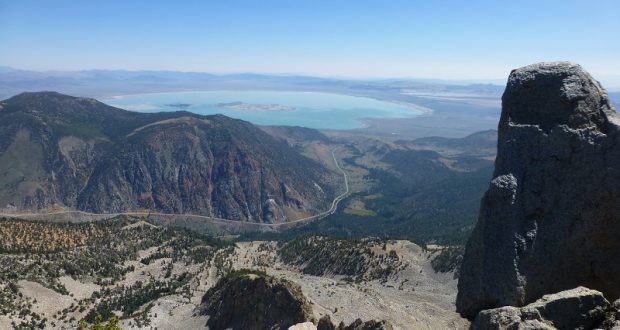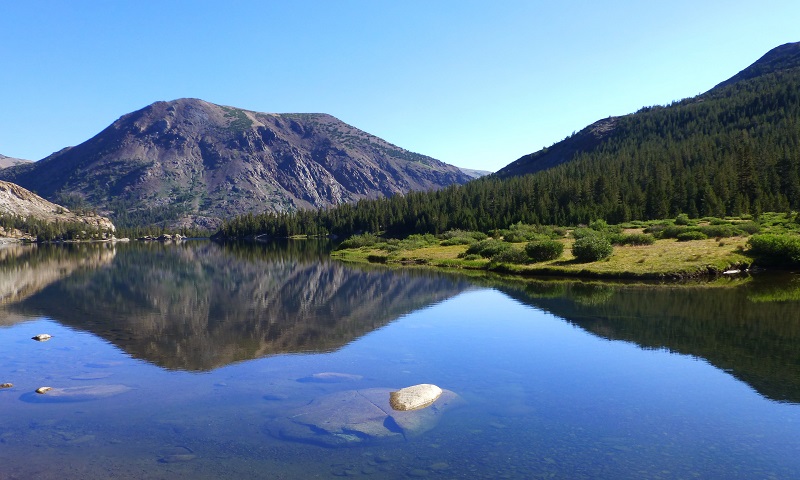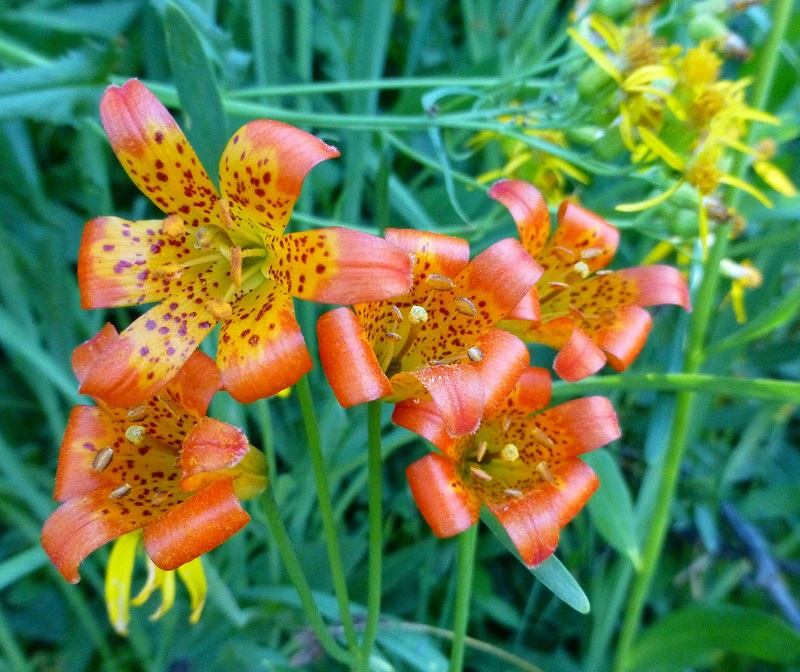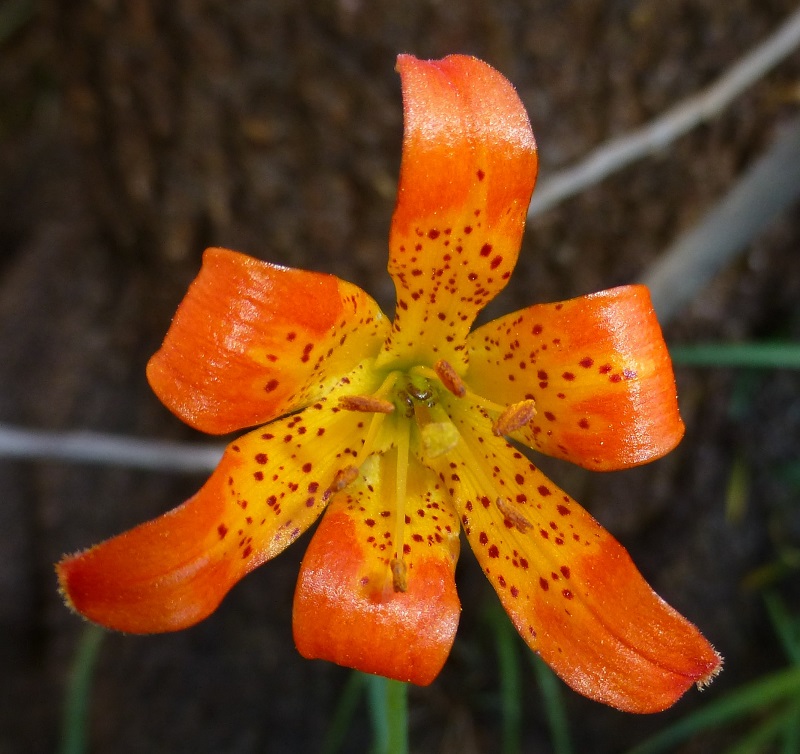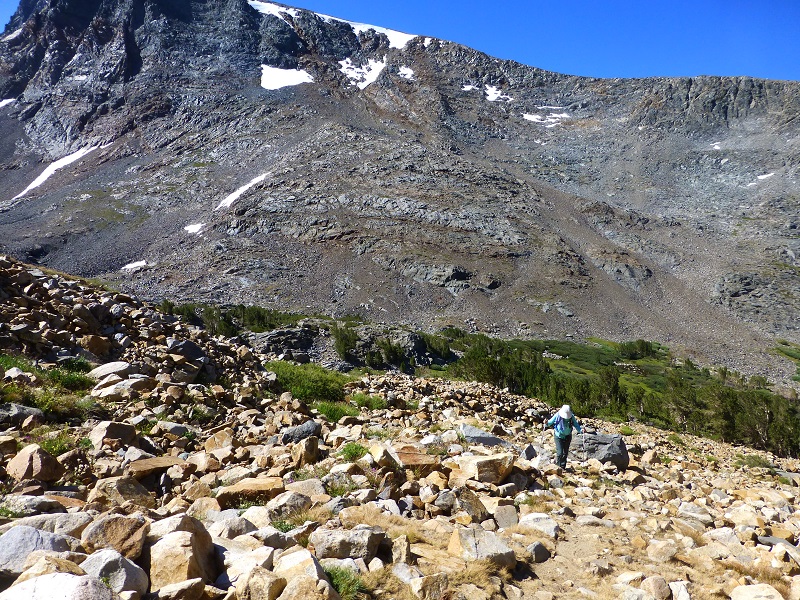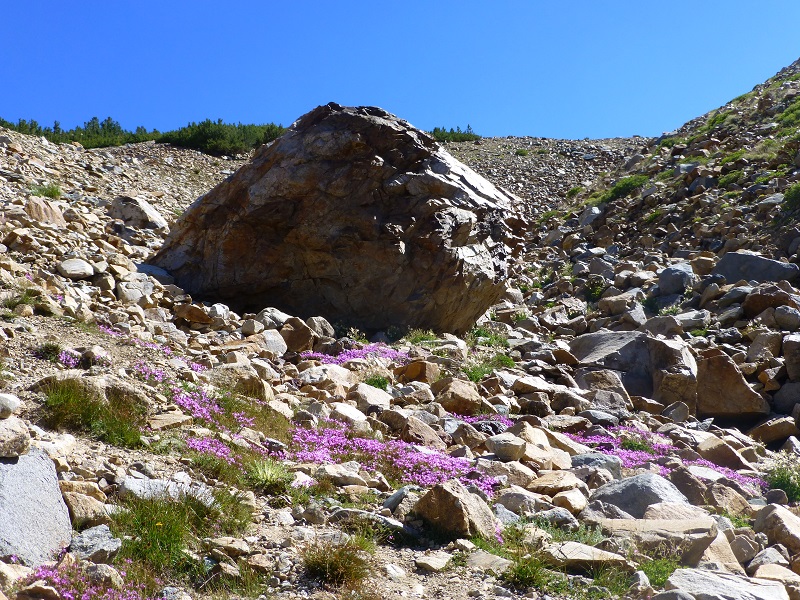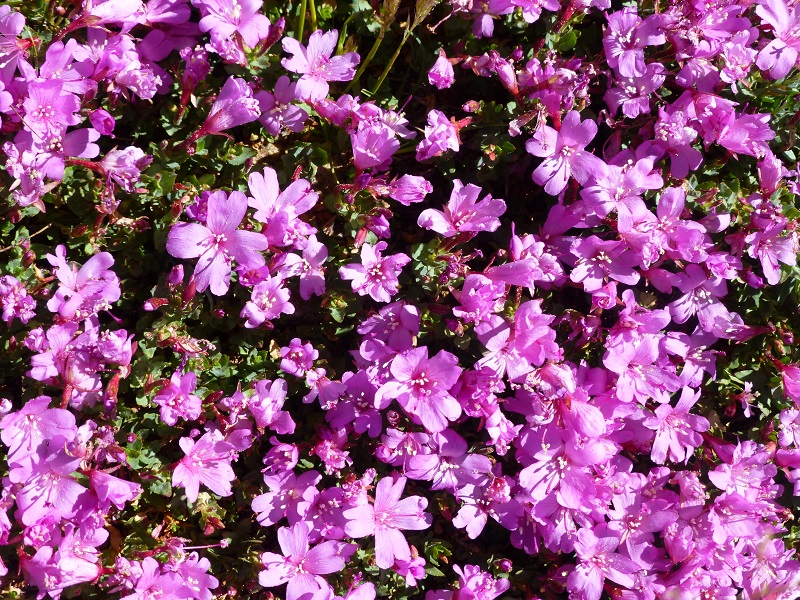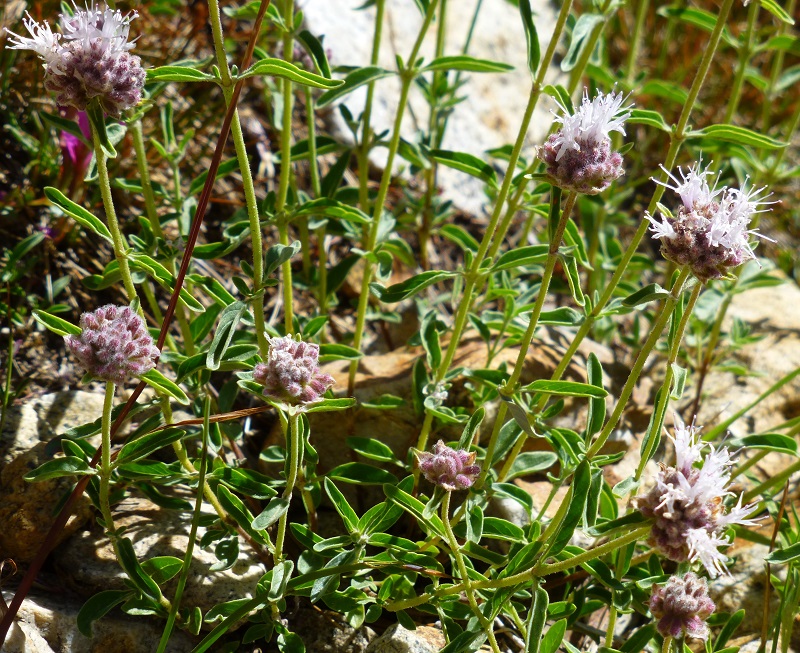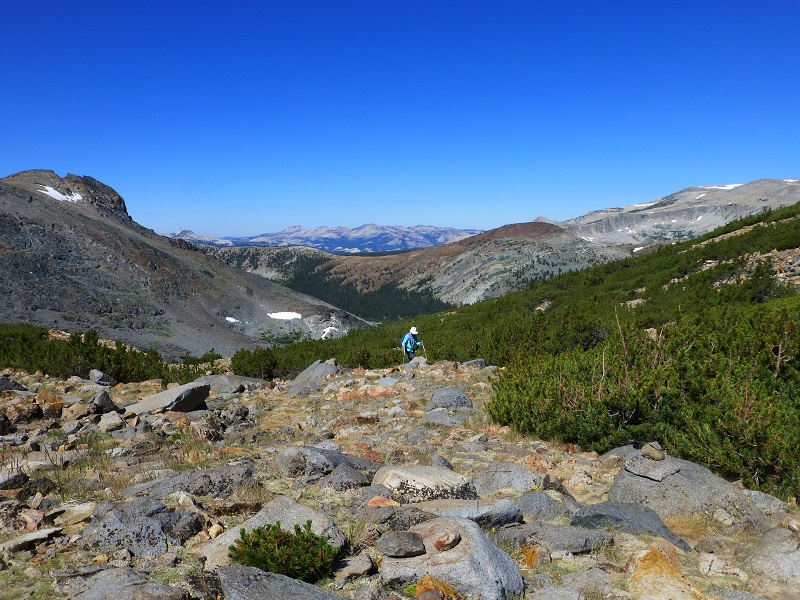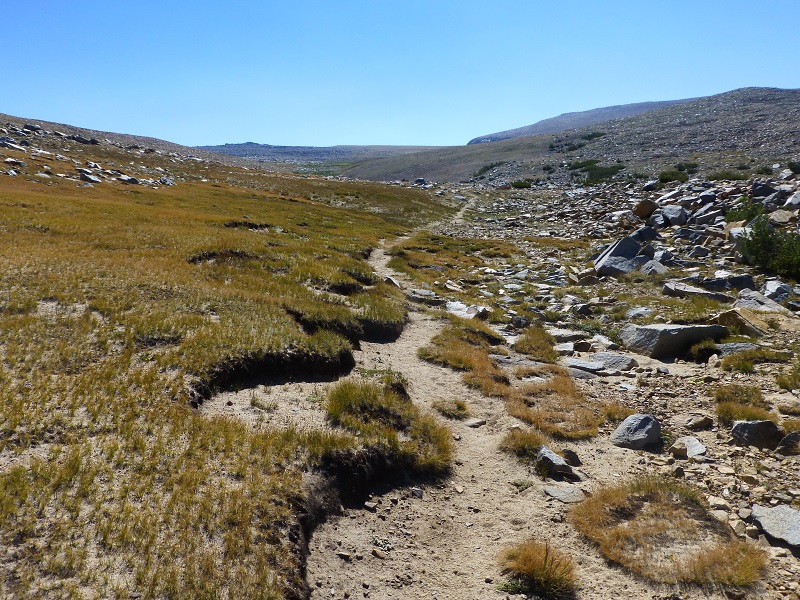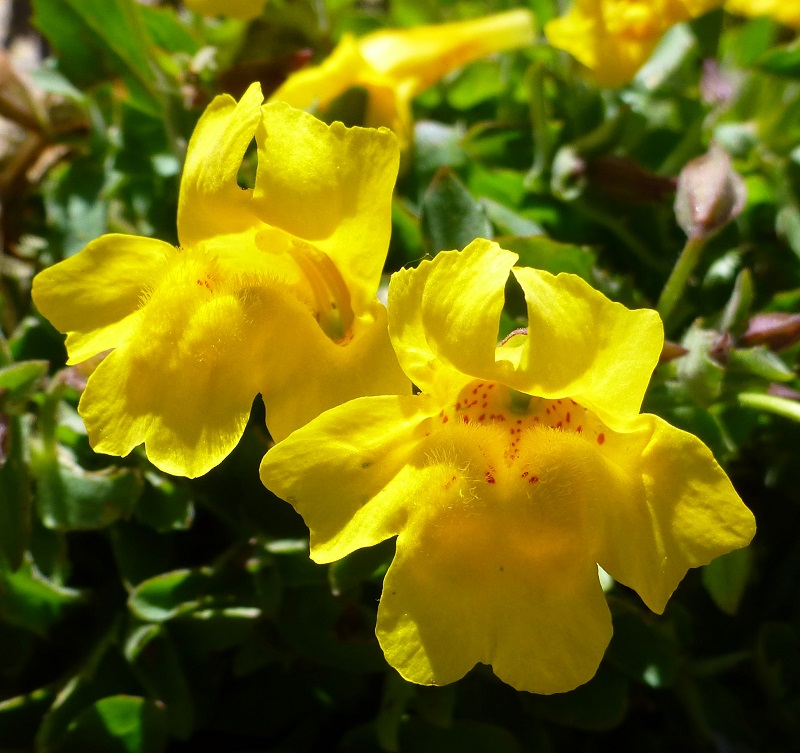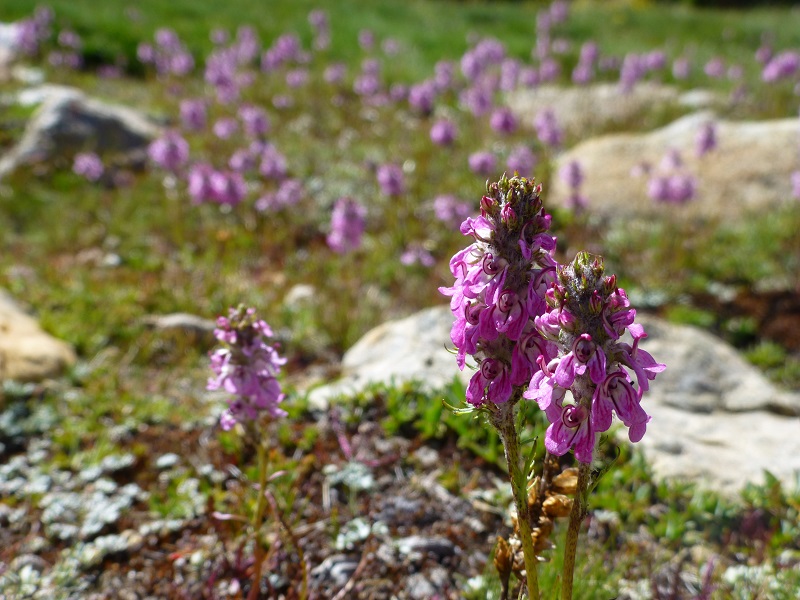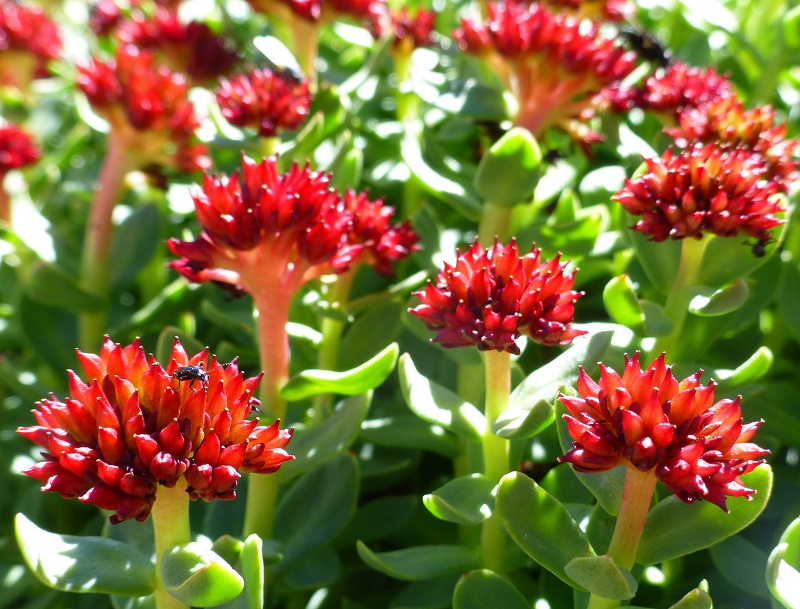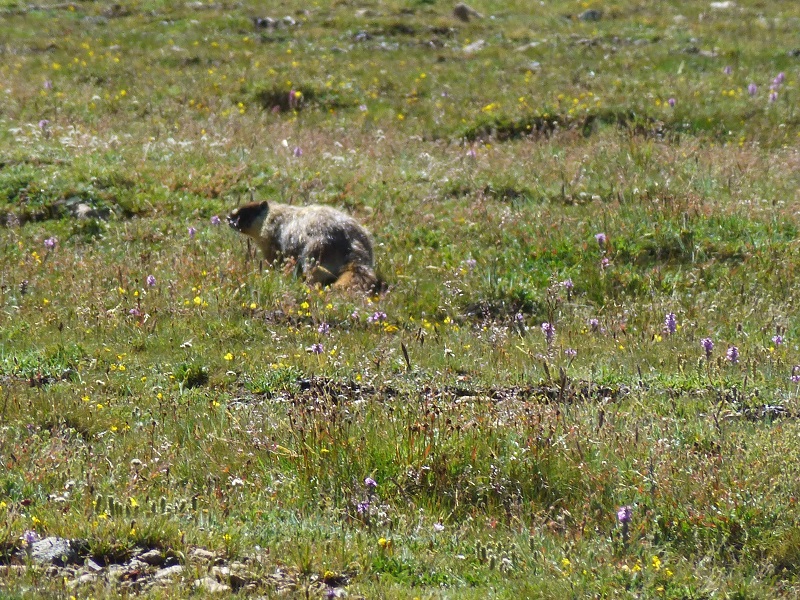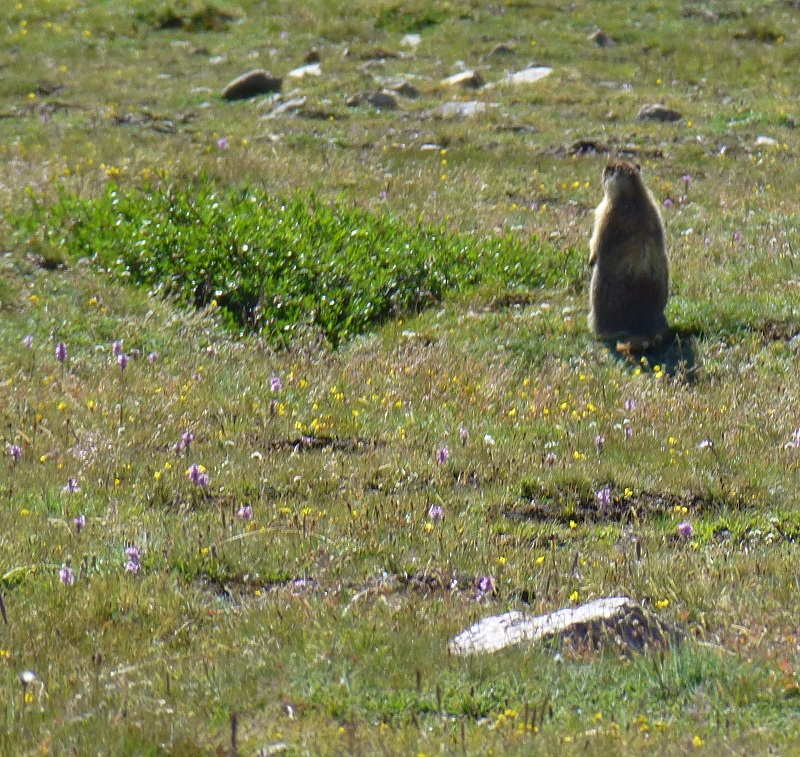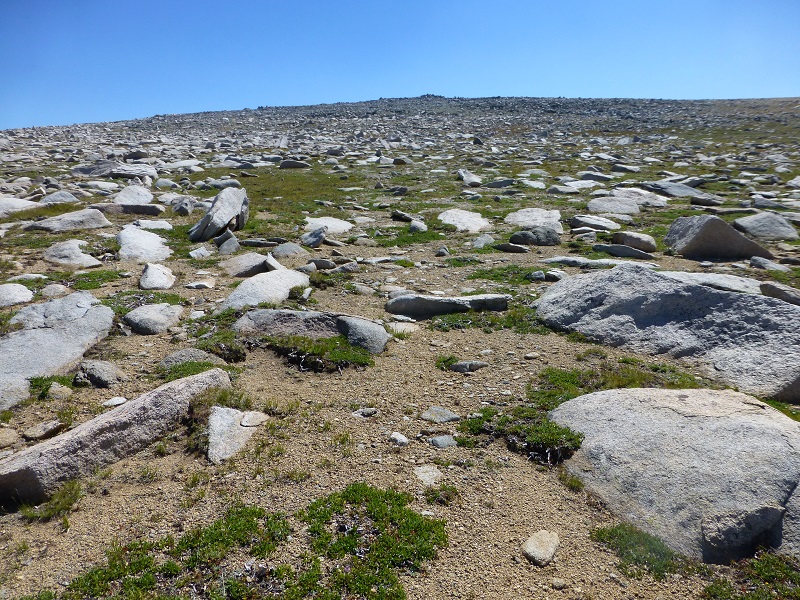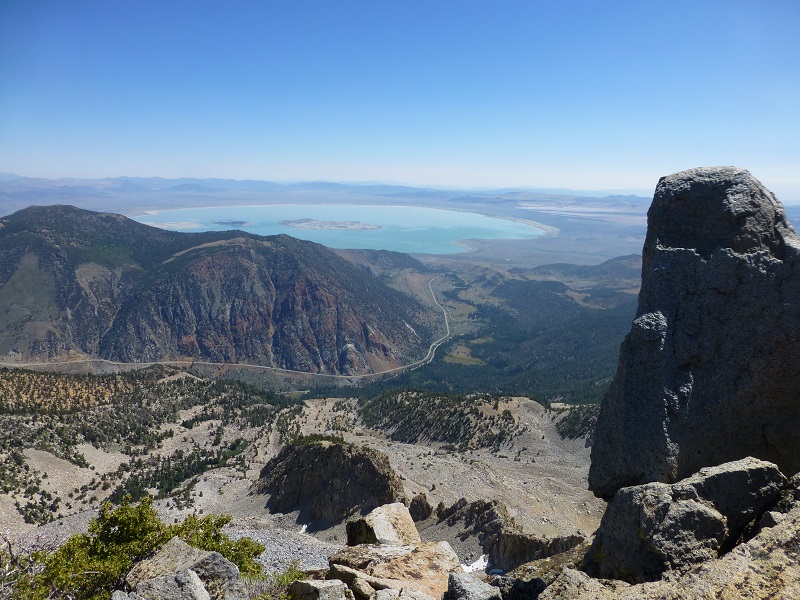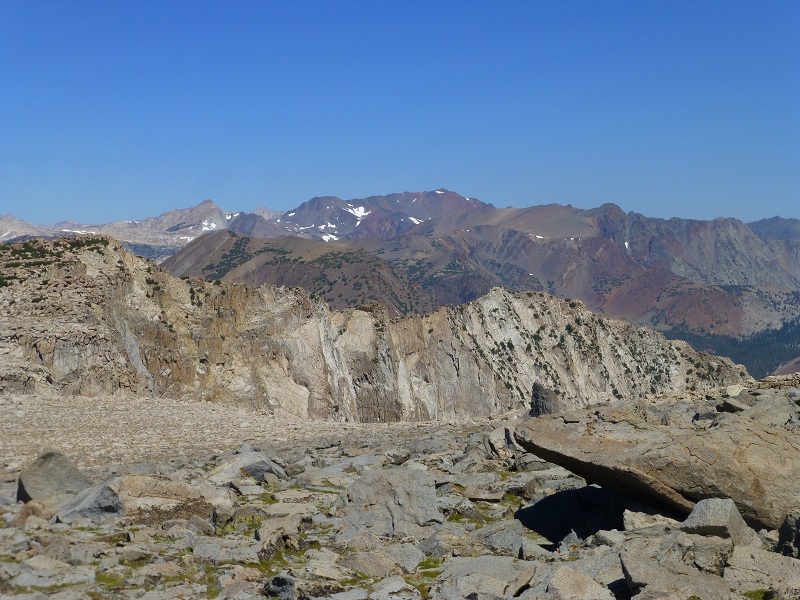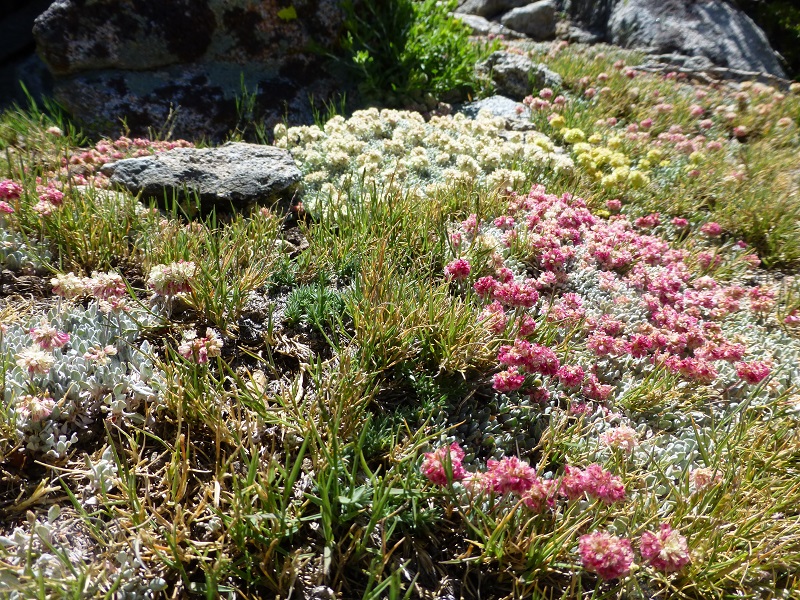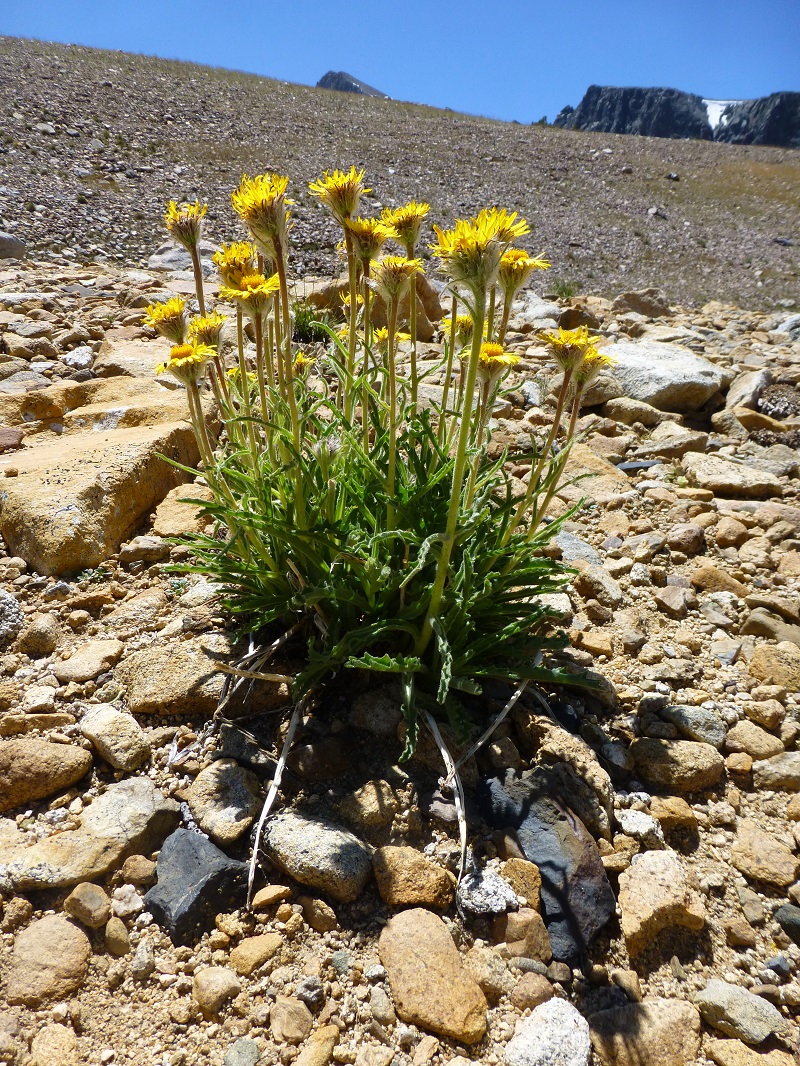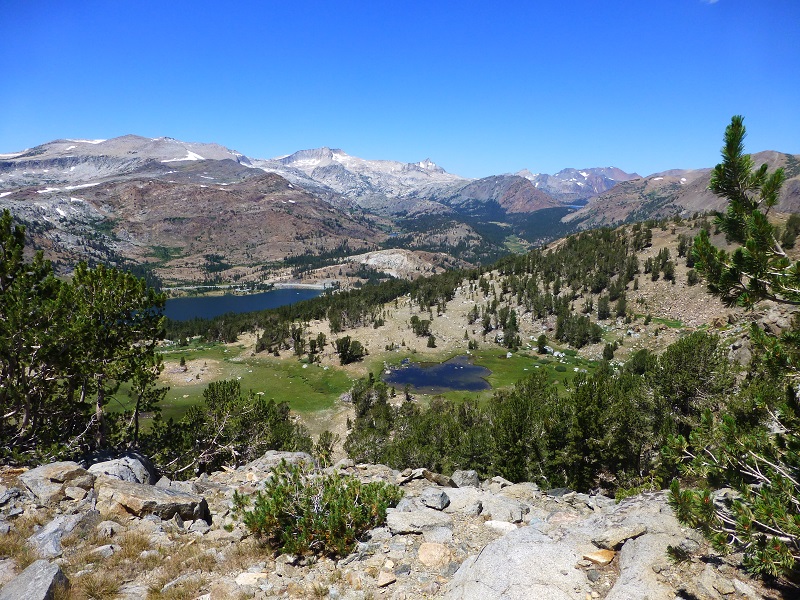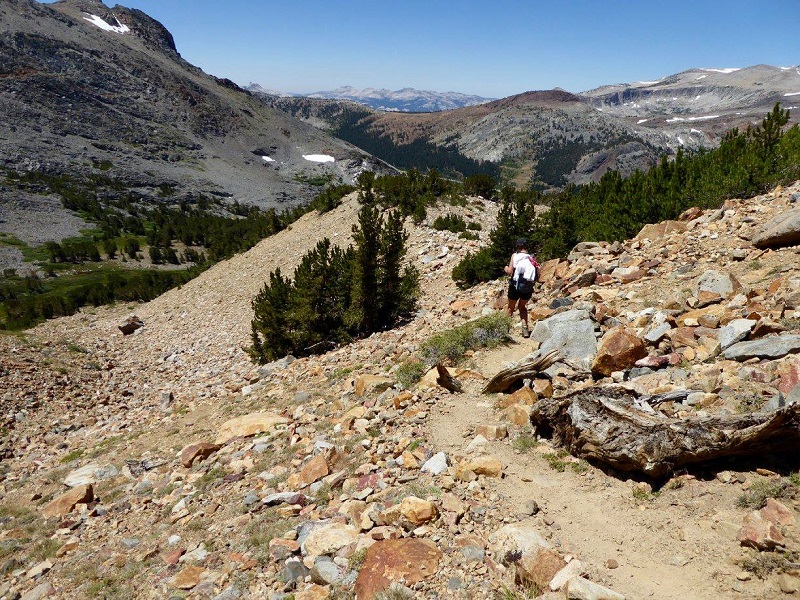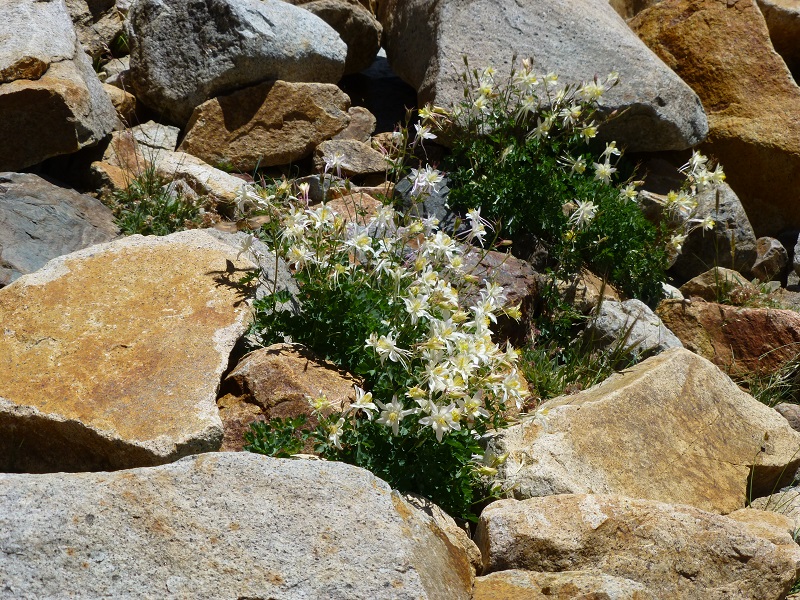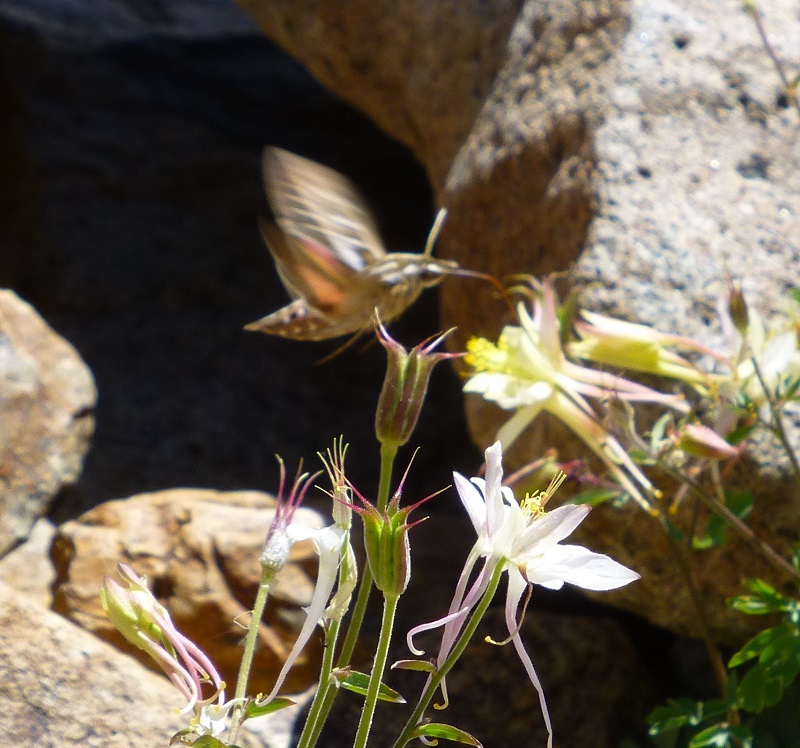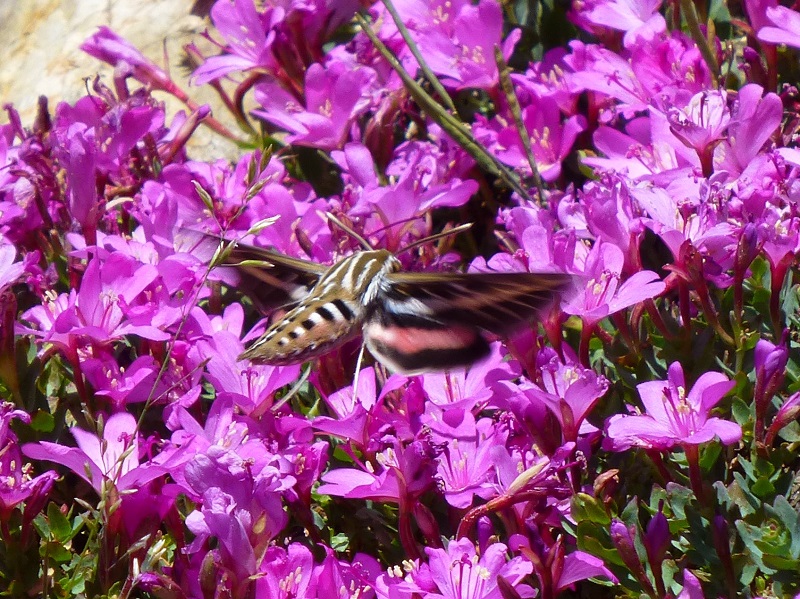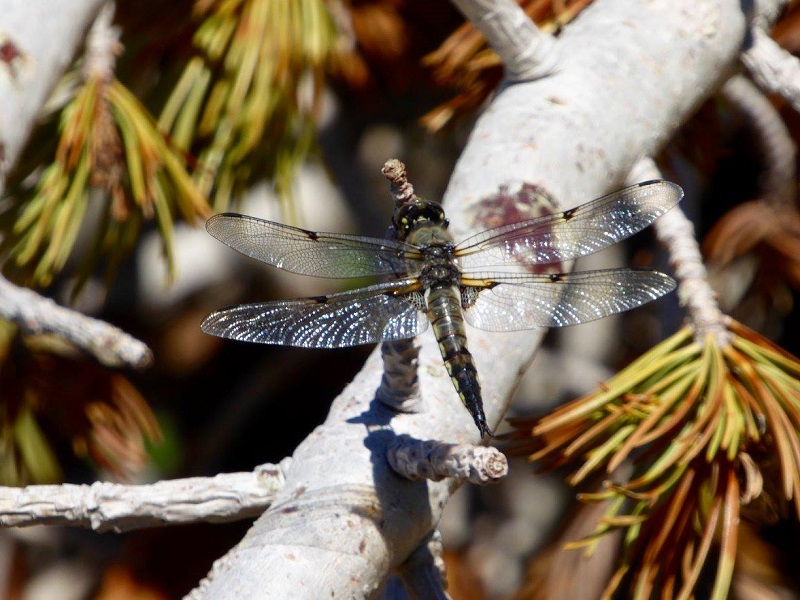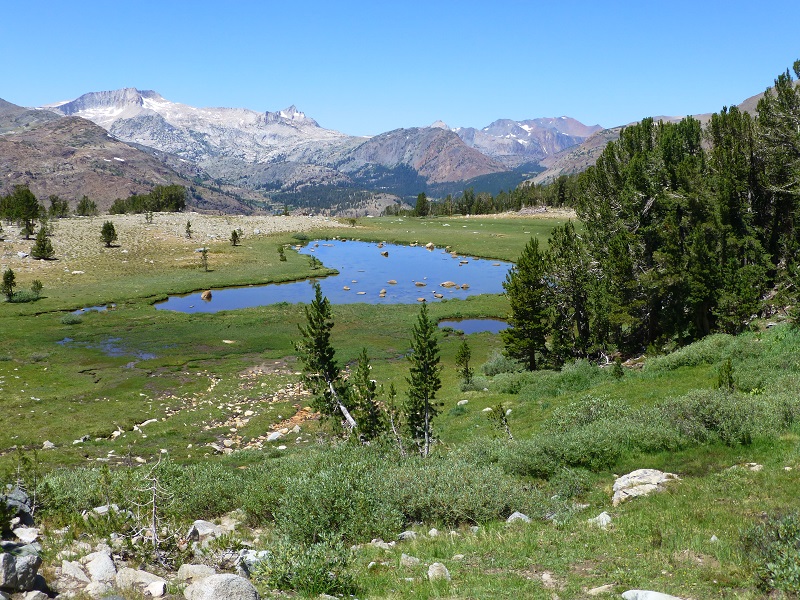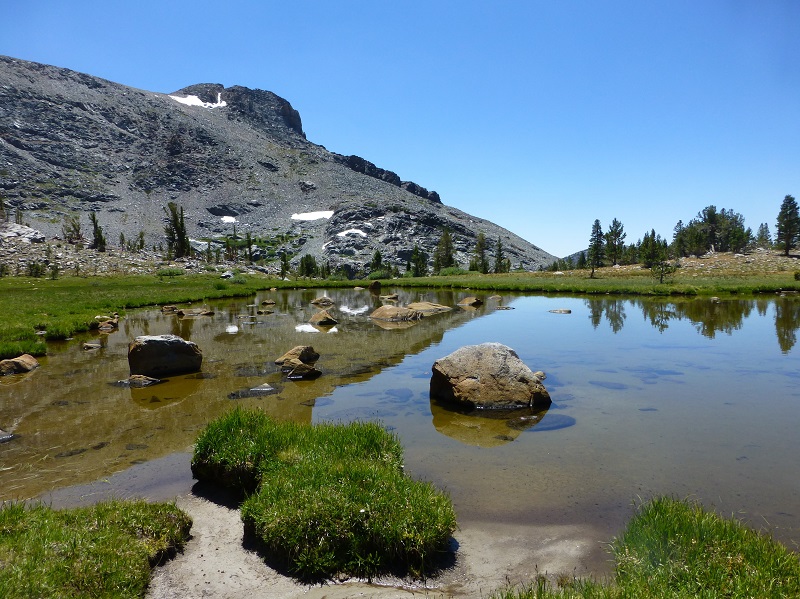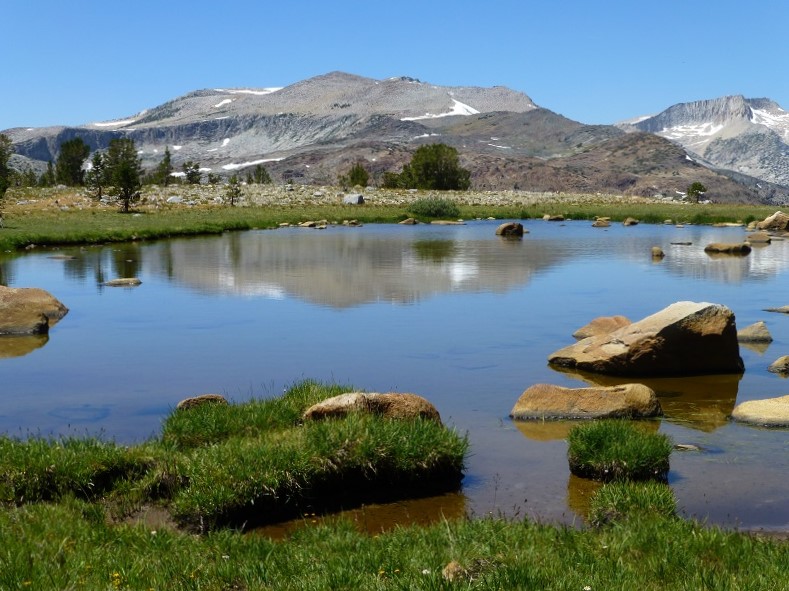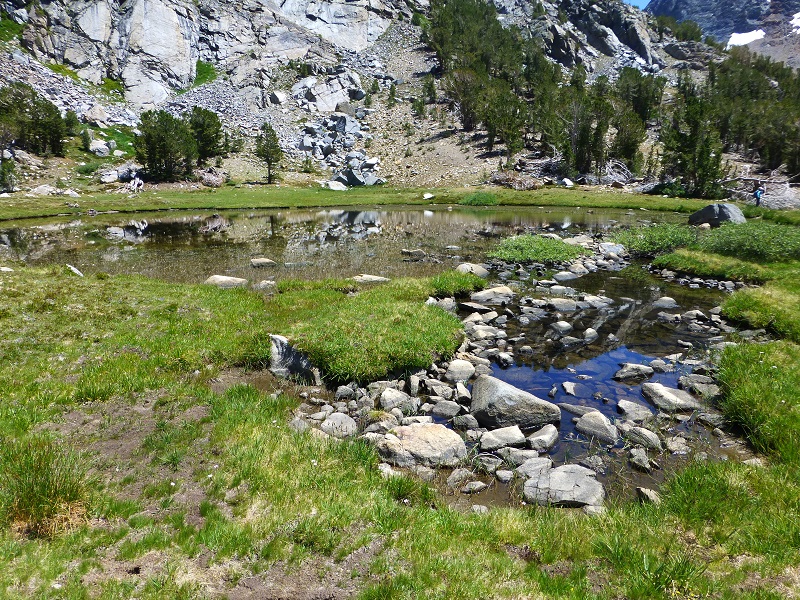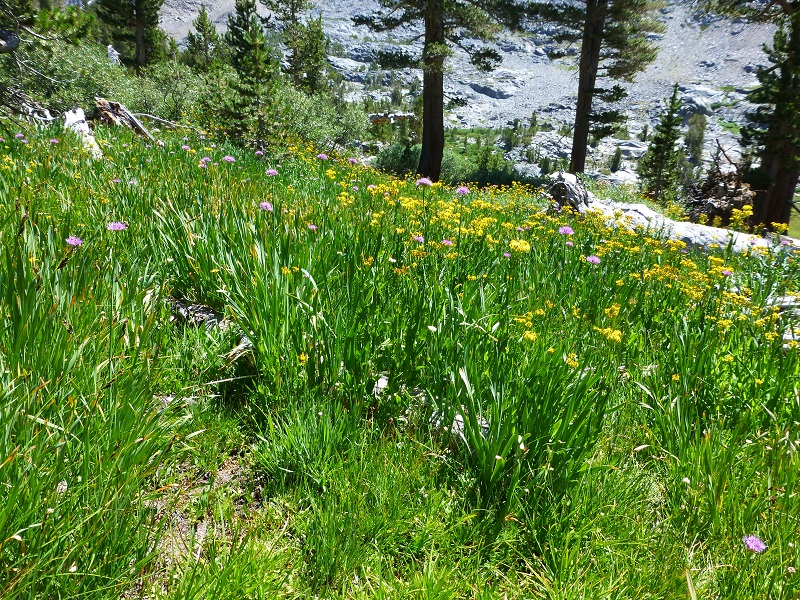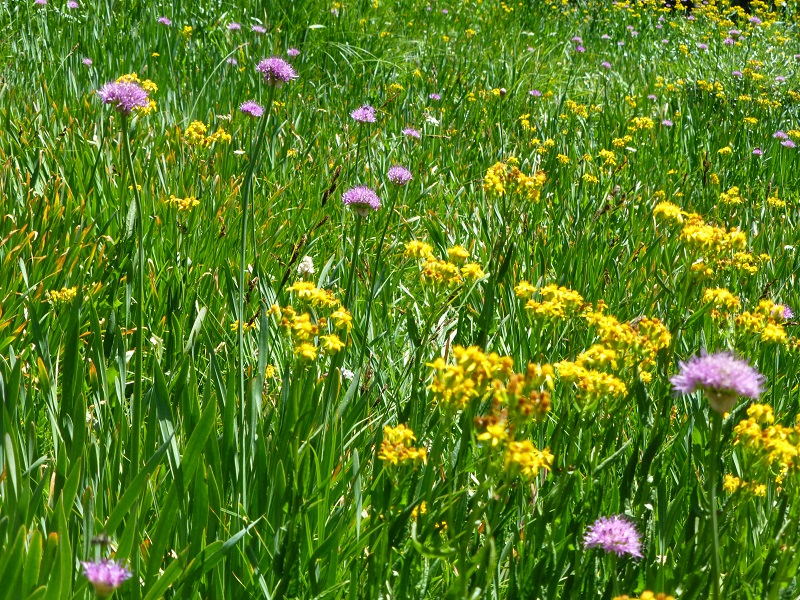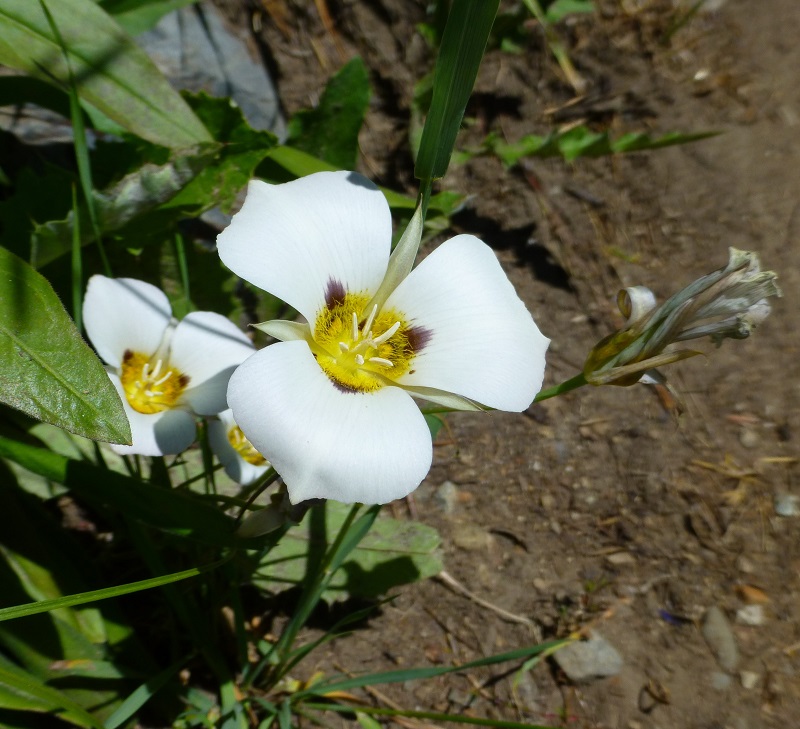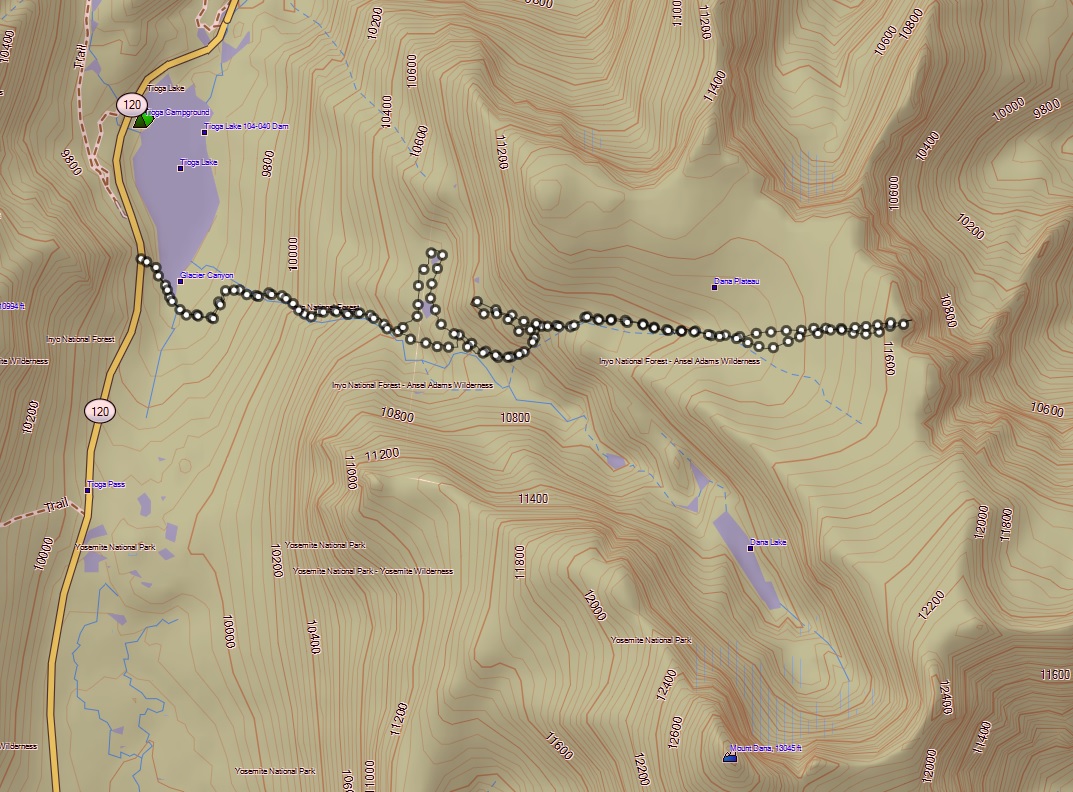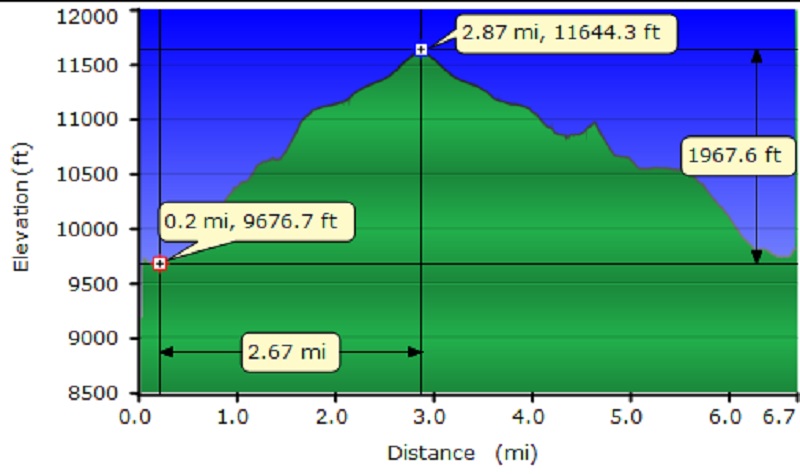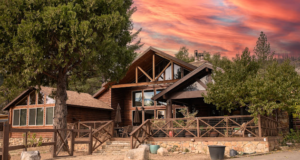When you get on top of Dana Plateau, you are right on the edge of the crest with a sharp drop off and killer views into the Mono Lake area. The hike up to the top is always different and this time we were treated to colorful wildflowers, a marmot and strange winged creatures.
Where: Ansel Adams Wilderness Area, Inyo National Forest
Distance: 6.44 Miles
Difficulty: Strenuous
Elevation Range: 9,654′ – 11,652′
Date: August 3, 2016
Maps: Falls Ridge and June Lake Topographic Quads
We started this short but steep adventure at the trailhead at the west end of Tioga Lake on Tioga Road, just east of the Tioga Pass entrance to Yosemite National Park. As we rounded Tioga Lake, we could see those gorgeous reflections taking shape.
We had hiked much of this are two weeks ago and I never could have imagined that we would have seen such a change in wildflower species in that short of time. The color was just as amazing, only different. We hadn’t headed too far up the trail along the Dana Fork when we noticed the tiger lilies.
After about 1 1/2 miles, we started climbing up, following a snaketrack of a trail though the rocks.
This rocky area looked barren but pops of color were nestled among those rocks.
Pennyroyal is my favorite plant up in this area and the wonderful minty smell comes alive as you brush along side of it.
We had traveled about 2 1/2 miles, gaining about 1,500′ in elevation, but we still had more trail to head up.
We were well above timberline and one of the surprises about this area was the beautiful flowers that we found, including these bright yellow monkey flowers by a tiny creek.
A little farther up the hill, we came across masses of these pink elephant heads.
And a little farther up, we saw rosy sedum.
I caught some movement ahead of me. What was it? A marmot and he kept an eye on us as we moved past it.
We still had a ways to go.
When we reached the top, we had an amazing view of Mono Lake and Tioga Road as it wiggled its way down the mountain.
The view was pretty nice looking north and to the south. It was a great spot to stop for lunch and that view just doesn’t get much better.
As I looked closer, I could see small flowers nestled in among the rocks.
We headed down, then worked our way over to a high point where we could check out those lakes that I wanted to pay a visit to . . .but we didn’t see an easy way down so headed back over to the trail.
We followed the trail back down.
I needed to check out the columbine. It was at its peak two weeks ago and much of it was over the hill but we still found some nice looking blooms.
I spotted something really working those blooms but they were moving really fast. What could this be? A hummingbird? A moth?
It turns out that these were sphinx moths, also called the hawk moth and the hummingbird moth because of its hovering, swift flight patterns. These moths have wingspans ranging from 2 to 8 inches and they pollinate flowers while sucking their nectar with a proboscis (feeding tube) that exceeds 10 inches in some species. From descriptions that I could find, I think these were white-lined sphinx moths their size ranges in length from 2 1/2 to 3/12 inches. It has a prominent brown head, a brown thorax with 6 white stripes and a brown abdomen with paired dark spots on each segment. The forewings are brown with a buff-colored band from base to tip and veins outlined in white. The hind wings are pink, turning to dark brown near the margins.
Sphinx moth larvae change underground into adult moths, who then dig their way to the surface. Mating occurs shortly thereafter, with females laying as many as 1,000 eggs on the underside of food plants. Eggs hatch within a few days. Males and females die after they have completed their roles in the reproductive process.
Sphinx moths emerge at dusk from their hiding places and begin feeding on the nectar of flowers. Their size, combined with their rapid wing beats, allows them to hover and feed in the manner of hummingbirds, for which they are sometimes mistaken.
Their way of flying requires a lot of energy and creates a good deal of heat in the moth’s body. For these reasons, these moths feed exclusively on nectar and seek flowers which produce large amounts of this water source which also contain high amounts of sugar.
These sphinx moths weren’t the only flying creatures out today. Gail captured a beautiful dragonfly hanging out.
We continued on the trail back down to the area of the tarns, which were mostly dried up. This was at about the 10,600′ level and we veered off the trail to check out those little lakes. They weren’t very deep but they were full of reflections.
We headed cross country toward the Dana Fork where the trail was located, walking through a lovely patch of flowers.
We had a wonderful hike and some great exercise. I still can’t get over how quickly the flowers changed in two weeks.
Tips for viewing my blog:
- You can click on any of the pictures to view them larger, and then click forward and view them as a slide show.
- You can right click on any image and save that image to your computer then print if you wish. There are other options on that right click such as emailing the image. Of course, this will depend on which web browser you are using. This option will work well if you want to save the Topographic Maps for hiking or print them out.
- You can print the entire blog if you wish. At the bottom of the blog, after the Sources, there is a link “Print This Article.”
- You can save the Blog by right clicking, “Save Page As.”
- If you want to find one of my prior blogs, you can go to Adventures With Candace and scroll down to see if you can to find it, but there is an easier way. If you can remember a key word of the hike or its location, you can search for it by typing in the upper right top search bar on SNO’s Home Page.
Map and Profile:
Sources:
White-lined Sphinx Moths Desert USA
Prior Blogs in the Area:
A Breezy Hike Up To Dana Plateau June 11, 2013
Dana Plateau Hike September 20, 2012

